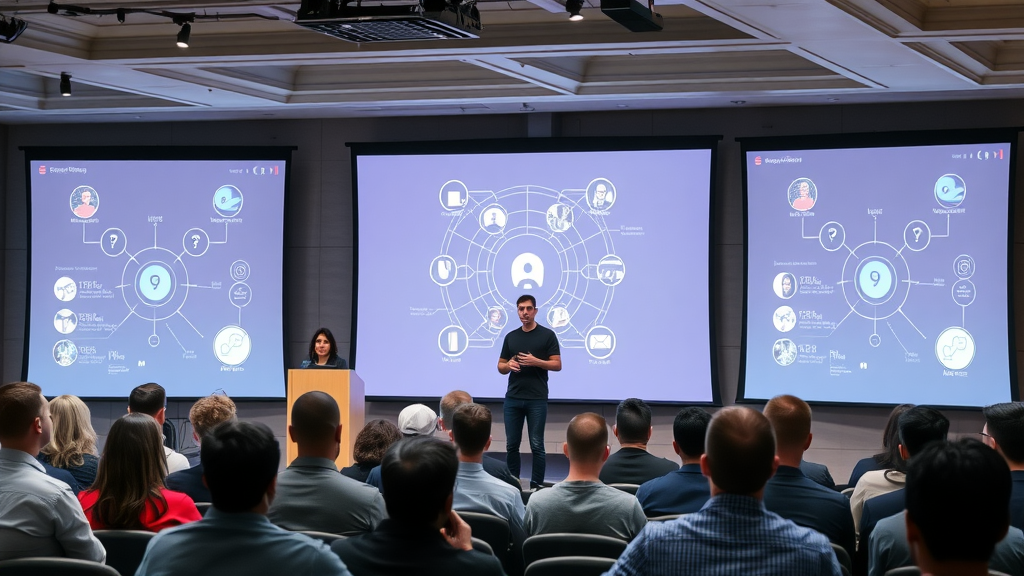
By Edge Tech Brief
The Big Shift at Oktane 2025
Okta’s annual Oktane conference wrapped up in Las Vegas with one unmistakable message: AI security is identity security.
For years, identity platforms focused on humans—employees, partners, and customers logging into systems. But as AI agents, bots, and autonomous apps flood the enterprise, Okta is reframing the problem: if you don’t secure the non-human actors in your environment, you’re leaving the door wide open.
This year’s announcements put a spotlight on AI agent governance, hybrid IT posture, and passwordless authentication—three moves that will shape enterprise security strategy for the next decade.
AI Agents Enter the Identity Fabric
The headline announcement was Okta for AI Agents, a suite designed to discover, register, authorize, govern, and monitor AI agents through Okta’s “identity security fabric.”
Alongside this comes Cross App Access (XAA), an extension of OAuth designed to tame the chaos of agent-to-app and app-to-app connections. Instead of scattering tokens and asking users for endless consent screens, XAA brings:
Centralized policy control over what agents can access.
Auditable trails of AI activity.
Least-privilege enforcement so agents only see what they need.
Why it matters: AI assistants aren’t just futuristic toys anymore—they’re scheduling meetings, pulling sales data, and even answering phones. Each of those actions requires sensitive access. Without guardrails, an AI agent is just as dangerous as a compromised human account.
Edge Tech Brief take: Okta is effectively creating the “passport office” for AI agents. Every bot gets an identity, rules, and a digital footprint. That’s how you prevent chaos as AI adoption accelerates.
Hybrid IT Isn’t Dead
Another big move: Identity Security Posture Management (ISPM) now extends beyond cloud apps to cover Active Directory and on-prem environments.
This matters because most enterprises—especially in sectors like finance, government, and healthcare—still run critical workloads on AD. Until now, posture checks and AI governance didn’t apply in these hybrid setups.
With this update, security teams can:
Detect risks in AD and on-prem setups.
Apply consistent policies across cloud + legacy systems.
Bring AI agents under control even in environments that weren’t “born in the cloud.”
Edge Tech Brief take: Too many security vendors pretend on-prem is dead. It isn’t. Okta’s decision to extend posture management here is pragmatic—and likely to resonate with risk-conscious enterprises.

The Passwordless Push
Passwords are still the weakest link in enterprise security. At Oktane 2025, Okta doubled down on phishing-resistant passkeys and FastPass, its passwordless authentication system.
Add in new identity-threat protection features—detecting bots and suspicious login patterns during authentication—and you start to see the shape of a passwordless future.
Why it matters:
Phishing is still the #1 cause of breaches.
Employees are tired of juggling credentials.
Customers want smoother sign-ins without compromising safety.
Passkeys are the bridge: device-based, biometric, and far harder to steal.
Edge Tech Brief take: Every vendor claims to be “killing the password.” Okta has the adoption scale to actually do it. For enterprises, the time to experiment with passkeys is now—not after attackers have moved on from phishing to agent exploitation.
Beyond Features: A Strategic Reframe
What makes these announcements significant isn’t just the features—it’s the strategic reframe.
Okta isn’t saying “we added AI features.” They’re saying:
Every identity matters. Humans, apps, and AI agents alike.
The new perimeter is identity. Networks, firewalls, and devices aren’t enough.
Identity is the control plane. If you can govern it at the identity layer, you can adapt to whatever comes next.
This is a shift from identity as a login service to identity as a security platform.

What It Means for Tech Leaders
Here’s the bottom line for CIOs, CISOs, and product builders:
AI governance can’t wait. If your teams are experimenting with AI agents, you need guardrails before those bots start connecting to sensitive apps.
Don’t ignore hybrid reality. If you’re running AD or legacy systems, posture management now has to include them.
Go passwordless early. FastPass and passkeys aren’t just hype—they’re the fastest way to reduce phishing risk while improving user experience.
The Road Ahead
Oktane 2025 made it clear that identity is no longer just about employees logging into systems. It’s the frontline of AI security.
As Okta CEO Todd McKinnon put it: securing humans is table stakes—securing AI is the new challenge.
For enterprises, the question isn’t whether you’ll adopt these identity security measures. It’s whether you’ll do it proactively, or after a breach forces your hand.

Final Word
At Edge Tech Brief, we believe this is a defining moment:
Identity is becoming the control layer of the modern enterprise.
The companies that move first to secure AI agents, unify hybrid posture, and embrace passwordless will set the standard.
Everyone else will be playing catch-up.
🔒 Stay tuned to Edge Tech Brief for more insights on AI, identity, and the future of enterprise security.
 Add Row
Add Row  Add
Add 




Write A Comment